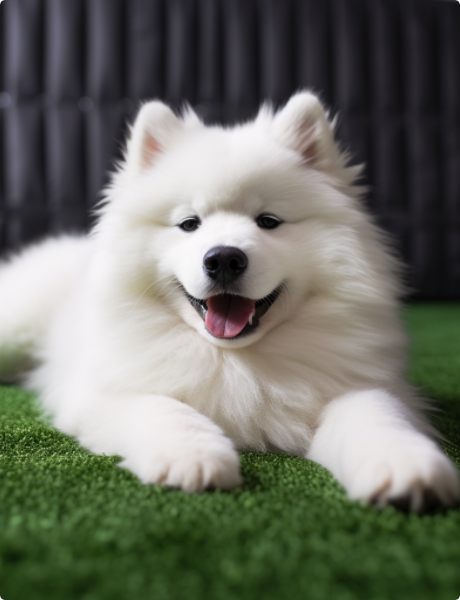
- Afrikaans
- Arabic
- Belarusian
- Bengali
- Czech
- Danish
- Dutch
- English
- Esperanto
- Estonian
- Finnish
- French
- German
- Greek
- Hindi
- Hungarian
- Icelandic
- Indonesian
- irish
- Italian
- Japanese
- kazakh
- Rwandese
- Korean
- Kyrgyz
- Lao
- Latin
- Latvian
- Malay
- Mongolian
- Myanmar
- Norwegian
- Persian
- Polish
- Portuguese
- Romanian
- Russian
- Serbian
- Spanish
- Swedish
- Tagalog
- Tajik
- Thai
- Turkish
- Turkmen
- Ukrainian
- Urdu
- Uighur
- Uzbek
- Vietnamese
Guide to Installing Artificial Turf for Your Outdoor Spaces
Sep . 28, 2024 15:42 Back to list
The Complete Guide to Artificial Turf Installation
Artificial turf has gained immense popularity over the years, becoming a preferred choice for homeowners and businesses alike. Its lush, green appearance, low maintenance needs, and durability make it an appealing option for various applications, from residential lawns to sports fields. If you're considering installing artificial turf, here’s a comprehensive guide to help you navigate the process.
Understanding Artificial Turf
Artificial turf, often referred to as synthetic grass, is a surface made from synthetic fibers that mimic the look and feel of natural grass. It’s commonly used in sports, playgrounds, landscaping, and even around pools. The main benefits include reduced water usage, no need for mowing or fertilizing, and the ability to withstand heavy foot traffic without deteriorating.
Planning Your Installation
Before embarking on the installation process, it’s essential to plan thoroughly. Here are some steps to follow
1. Research and Selection There are various types of artificial turf available, each designed for different purposes. For example, sports turf is engineered for athletic performance, while landscaping turf is ideal for residential lawns. Assess your needs and select a product that fits those requirements.
2. Measure the Area Accurately measuring the area where the turf will be installed is crucial. Consider irregularly shaped spaces and account for any obstacles like trees or landscaping features. It’s advisable to consult a professional if you’re unsure how to measure correctly.
3. Budgeting Determine your budget for the installation process. This includes the cost of the turf itself, tools, infill material, and potential labor costs. Keep in mind that while the initial investment might be higher than natural grass, the long-term savings on water, maintenance, and repairs can make it a cost-effective choice.
Preparing the Site
The preparation of the site is a critical step in ensuring a successful installation. Here’s how to prepare
1. Clear the Area Remove any existing grass, weeds, or debris. You may need to use a sod cutter or shovel for larger spaces.
2. Grade the Soil Ensure the ground is level to prevent water pooling or uneven surfaces. If necessary, add or remove soil to create a smooth base.
artificial turf installation

3. Install a Weed Barrier To prevent weeds from growing up through your artificial turf, consider laying a weed barrier fabric. This adds an extra layer of protection against unwanted plant growth.
4. Base Layer Adding a base layer, typically composed of crushed stone or gravel, provides drainage and stability. Use a plate compactor to compact the base, ensuring it is even and well-structured.
Installation of Artificial Turf
Once your site is properly prepared, you can begin installing the artificial turf
1. Lay the Turf Roll out the artificial turf over the prepared area. Allow it to acclimate to the temperature for a few hours before cutting it to size.
2. Cutting and Seaming Use a utility knife to cut the turf to fit your space, making sure to seam pieces together properly. Seams should be staggered for a more natural look.
3. Infill Application Depending on the type of turf and its intended use, you may need to add infill material, such as sand or rubber granules. This helps the turf blades stand upright and provides cushioning.
4. Brushing and Finishing Touches After the infill is applied, use a broom or power rake to brush the turf and distribute the infill evenly. Lastly, check for any imperfections or areas needing adjustment.
Maintenance of Artificial Turf
One of the significant advantages of artificial turf is its low maintenance. However, regular upkeep is still essential. Ensure you
- Rinse off any debris or pet waste. - Brush the turf occasionally to maintain its appearance. - Inspect for any damages or shifting and address them promptly.
Conclusion
Installing artificial turf can vastly enhance the beauty and functionality of your outdoor space. With proper planning, preparation, and maintenance, you’ll enjoy a stunning, green landscape all year round, without the hassle of traditional lawn care. Whether for a backyard, playground, or sports field, artificial turf has the potential to transform your environment into a sustainable and attractive space.
-
The Benefits of Artificial Turf for Indoors
NewsJul.15,2025
-
How Artificial Grass Suppliers Ensure Quality Products
NewsJul.15,2025
-
Artificial Grass and Pets: A Space for Relaxation
NewsJul.08,2025
-
Balcony & Outdoor Decoration with Artificial Grass
NewsJul.08,2025
-
Best Indoor Artificial Grass for Home
NewsJul.07,2025
-
Best Pet Turf for Dogs: Safe & Durable Artificial Grass Options
NewsJul.07,2025
Products categories









